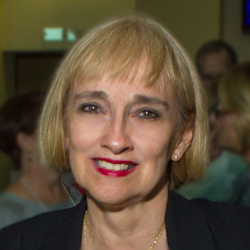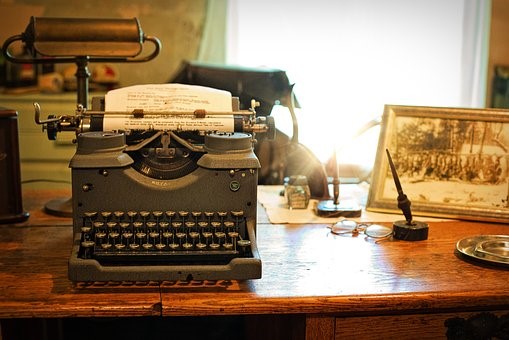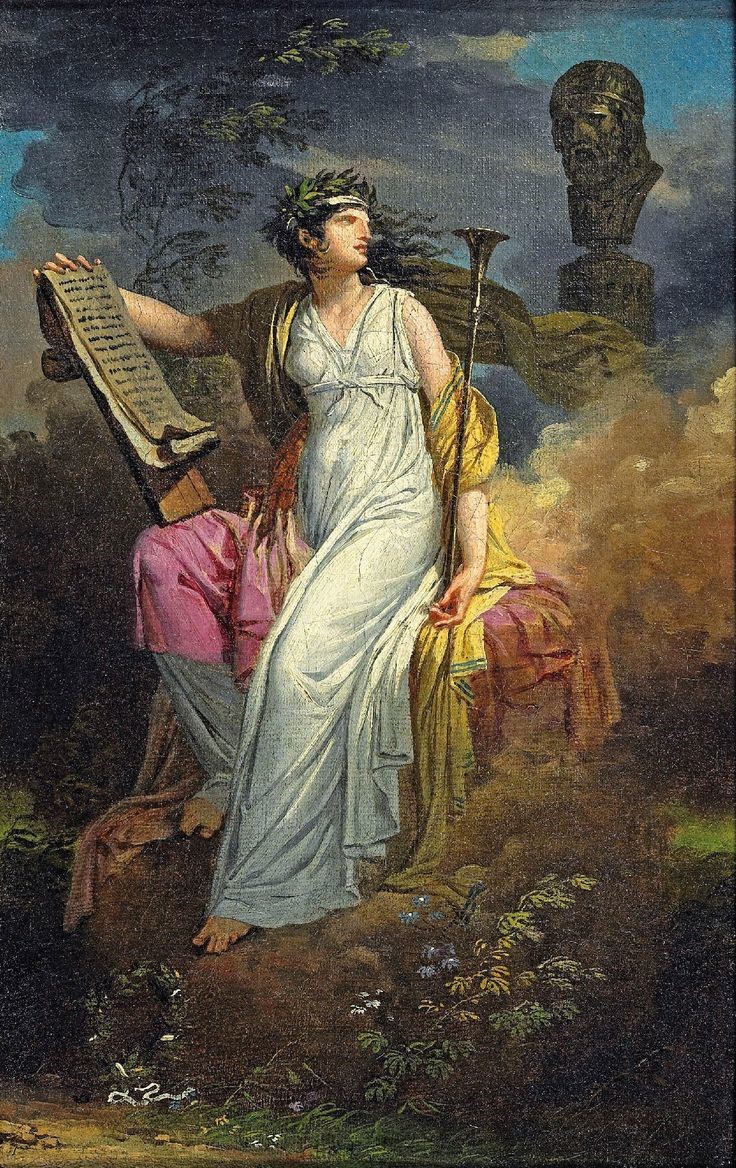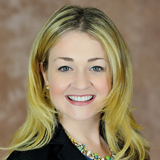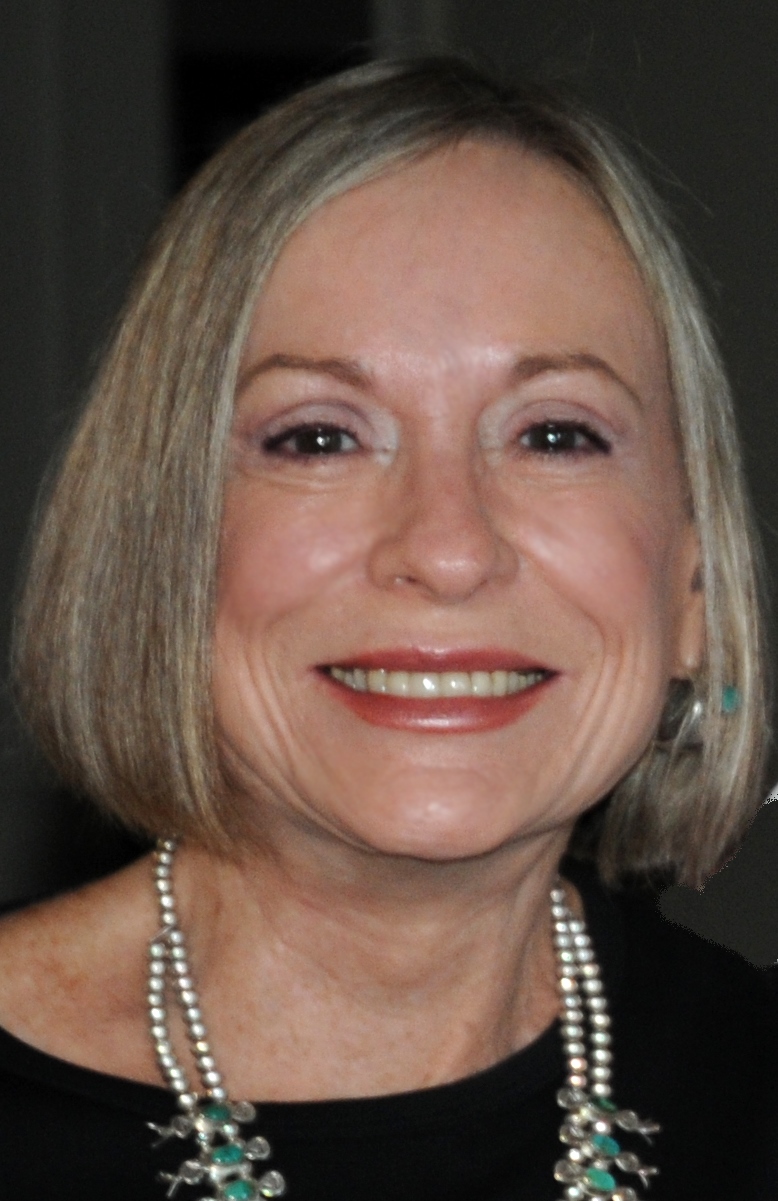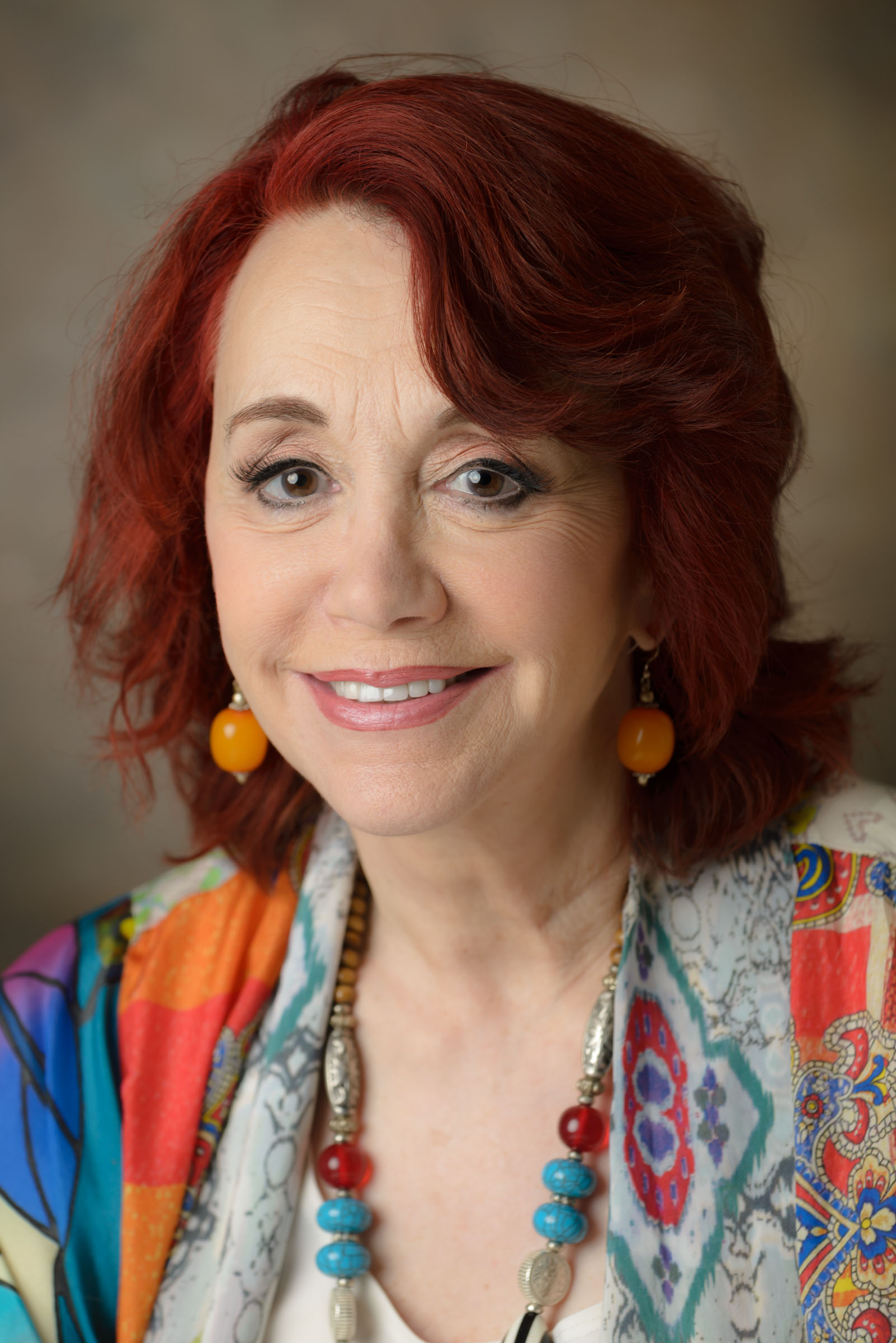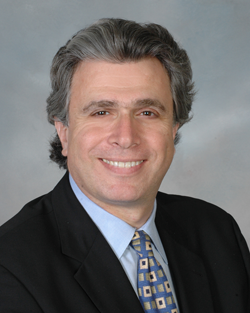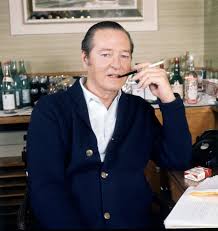
Well, hello there! Welcome back! We hope you’ve had an interesting and relaxing summer and are ready to come back to school. We’ve got a cornucopia of lectures and courses to entice you so read on to discover some of them. What is your fancy this fall?
Some Osher Lifelong Learning Institute at FAU Jupiter Fall 2017 Lectures
Robert P. Watson, Ph.D.
Hamilton: Man, Myth, Musical
Thursday, October 19, 2017, 7:00-8:30 p.m.
There appear to be only two types of people – Those who have spent a lot of money on tickets to see Hamilton and those who are still trying to get tickets! Happily, I am in the former category. Although I nearly had to mortgage my house to buy tickets for my family, it was worth it. In the lecture on the life and influence of the extraordinary Founding Father, I will devote some time to the hit Broadway musical – fact-checking it, explaining the lyrics and scenes, and perhaps even rapping a few lines!
Mark Tomass, Ph.D.
Assessing the War on Terror – Western and Middle Eastern Perspectives
Tuesday, October 24, 2017, 9:30-11:00 a.m.
After summarizing the rationale for US policy makers’ reaction to the 9/11 terrorist attacks and outlining scholarly assessments of that policy’s efficacy on its 15th year anniversary, my October 24 lecture will present my understanding of the reasons for the proliferation of terrorist activities in the Middle East and in the West and suggest short and long-term means to defeat the groups perpetrating them. Based on my life experience as a Syrian native, I urge policy makers not to focus on the actions of terrorists, but on the prevailing ideology behind these actions – the religious basis of terror. The fundamental parallels between the terrorist groups’ deadly campaigns are embedded within their religious dogmas and cultural identity. Contrary to what is commonly claimed by sympathizers with those groups, that the terror groups emerged as a reaction to the US invasion of Iraq, I show that their victims are, first and foremost, women, non-Muslim natives of the Middle East, and fellow Muslims whom they demonize and spill their blood on the charge of apostasy. I will present contemporary and historical evidence to show that the expansion of al-Qaida and its daughter ISIS was not born in a vacuum; it only boldly enforced widely accepted beliefs in the Arab and Muslim world.
Mark C. Schug, Ph.D.
The Economy of President Trump One Year after the Election –
Economists Analyze the Ups and Downs of President Trump’s First Year
Thursday, November 2, 2017, 4:30-6:30 p.m.
Remember January 2017? It looked like the economy was finally going to emerge from the doldrums. The stock market was booming. Expectations were high that health care would be changed, infrastructure spending would soar, regulatory burdens would be eased, taxes would be reformed, the wall would be started, and NAFTA would be abandoned. Fast forward to the fall of 2017 and things look different. While some regulatory changes have been made, the health care debate delayed action on most other economic changes. And, of course, the breathless media reporting on President Trump and Russia, including the appointment of a special counsel, have distracted people from the economic policy changes that have taken place.
Will President Trump finally get his feet under him and begin to move his reform agenda through Congress? Will he give up the tweets to concentrate on governing? And, just as important, will his economic reforms help or hurt the American economy?
Want to get all the latest economic analysis on President Trump’s economic policy? Then come and see our all-star, FAU panel of economists on Thursday, November 2, beginning at 4:30 p.m. The latest economic policies and controversies will be the focus of the panelists.
Myrna Goldberger
Origin and Early Rise of the Department Store
Saturday, November 4, 2017, 1:00-2:30 p.m.
Department Store Tycoons
Saturday, Dec. 2, 2017, 1:00-2:30 p.m.
This summer, I have been busy preparing for the upcoming season and thinking of ideas that are gender friendly, age friendly and, for a change of emotions, non-controversial. It all began when I researched the advent of the credit card and, in thinking about where it is used, my community informal survey suggested restaurants and malls. Anyone who knows me knows I am not a “foodie” so that left the rest of the shopping world. I have learned that the founder of Macy’s was part of the whaling community in Nantucket. I have learned that the Gimbel stores were born because the patriarch had seven sons and needed a way to feed all of them. I have learned that Alfred Bloomingdale had a shrewd, calculating mistress and I have learned that Nordstrom’s birth place was 60 miles from the Arctic Circle. Finally, what clinched my interest was the discovery that department stores sprouted up because of a single invention. Without it, we may never have had any of the stores we can so easily name. I challenge you to supply the name of the invention! E-mail me at mgoldbe699@aol.com. Let’s see how many correct responses I receive. For those of you who make the effort, I will grade A+ for the course. You all will receive an A just for showing up and hearing the saga of America’s favorite pastime.
Robert P. Watson, Ph.D.
The Ghost Ship of Brooklyn
Monday, November 13, 2017, 3:00-4:30 p.m.; Book-signing: 4:30-5:30 p.m.
It took me several days, but when I found Captain Thomas Dring’s two century-old diary and read the ghastly details recorded by the author, I could hardly contain my excitement. And shock. But the most intriguing entries in the old manuscript were not those chronicling an unknown and unspeakable chapter in American history, but a list of names and details about a few other sailors who managed to escape the dreaded “ghost ship.” My hope was that they too lived to tell their tales, that they recorded their adventures, and that their words, though long forgotten, had also survived history. They did! One of them was a young boy named Christopher Hawkins…
Ralph Nurnberger, Ph.D.
The Dutch Golden Age, Tulip Mania and the Jews of Amsterdam
Thursday, November 16, 2017, 7:00-8:30 p.m.
As the wealthiest city in Europe in the 17th century, Amsterdam transformed itself into a thriving center for great artists, scientists, writers, and scholars, as well as a hub of banking and finance. Once the city rid itself of Spanish rule and set up a society based on capitalism and world trade, it also became a metropolis that was philosophically enlightened and religiously tolerant.
It encouraged art (Rembrandt and others); philosophy (Descartes); religion (Spinoza); science (Leeuwenhoek); new universities; publishing (Hobbes and Locke could not publish in England, so they published in Amsterdam); and the beginnings of international law (Grotius); and the first stock markets.
This presentation explores the many facets of this 17th-century hub, including “Tulip Mania”, when Dutch investors were willing to pay the equivalent of $100,000 for one tulip bulb in the hope that the price would continue to increase. This became the basis for capitalism’s first “bubble.”
Finally, there will be a discussion of how the city’s religious tolerance enabled Dutch Jews to practice their religion openly, thus setting the stage for Judaism to develop from a medieval to a modern religion. This enhanced the ability of all citizens of Amsterdam, including Jews, to engage in trade in Europe and the New World.
Casey Klofstad, Ph.D.
How Biology and Society Influence Our Politics
Monday, November 20, 2017, 2:30-4:00 p.m.
Why are some societies free while others are not? Why are some societies paralyzed by violence while others are peaceful? Why is the gap between the rich and the poor astronomical in some societies, but less so in others? The answers to these fundamental questions are tied
directly to how we select our leaders. In this lecture, we will examine the influence of human voice pitch, a biologically determined characteristic, on this selection process. While we commonly think of voting in terms of partisanship, the state of the economy, and foreign
relations, research shows that voters are also influenced by the tone of candidate’s voices.
Stephen Engle, Ph.D.
Andrew Jackson and the Rise of the Democratic Party
Monday, December 4, 2017, 2:30-4:00 p.m.
Legend has it that Americans who brought Jackson to power were tobacco spitters, drunkards, gamblers, and just plain vulgar. Yet, Jackson’s emergence on the presidential stage coincided with the emergence of an American middle class that cultivated respectability and indulged in material goods. Despite social and cultural disparities, the Jacksonian voter was a force to be reckoned with at the polls, like him or not. Universally known as Old Hickory, Andrew Jackson’s popularity and election was the product of electoral changes and voter mobilization that transformed American politics. Once in power, Jackson defied established procedures, ignored congressional opinion, and contended with the national bank. Yet, his aggressive leadership style set off shock waves that brought together his opponents, who ultimately toppled the Democrats. For all the talk about the Jacksonian Presidency being the triumph of the common man, scholars still debate the merits of his achievements in helping the Democrats who put him in office. The two-party system as we know it today was beautifully balanced by the end of his second term, but the rank-and-file Democrat, the primary spokesman of his revolution, appeared to benefit the least from his presidency.
Matt Klauza, Ph.D.
Truman Capote: The Making and Breaking of a Celebrity
Wednesday, December 6, 2017, 3:00-4:30 p.m.
In my literature studies, I wasn’t introduced to Truman Capote until late in the game. However, when I did finally read him, I fell in love with his writing style. The famous author Norman Mailer called him the greatest writer of his generation, and I had to agree. There was a certain rhythm in his writing that made it simultaneously easy to read and profoundly emotional. From his short stories like “Miriam” and “A Christmas Memory” to his novels In Cold Blood and Breakfast at Tiffany’s, I loved the way he captured characters and moments in his plots with such precision. But even then, I studied his work in a vacuum, without any biographical context; it wasn’t until several years later that I began to learn about his complicated, high-profile, and tragic life. And from that point forward, given how much of his own emotions shape his work, he has been so easy and fun to teach through a biographical lens.
Ronald Feinman, Ph.D.
The Impact of Chief Justice Earl Warren on The Supreme Court
Thursday, December 7, 2017, 9:00-10:30 a.m.; Book-signing: 10:30-11:30 a.m.
- Chief Justice Earl Warren is regarded by most scholars as the second greatest Chief Justice in American history, just behind Chief Justice John Marshall (1801-1835).
- Earl Warren is regarded as one of the top Governors in California history (1943-1953).
- Earl Warren was the Vice Presidential running mate of Republican Thomas E. Dewey in 1948, an election Dewey was supposed to win easily over President Harry Truman, who staged a shocking upset victory.
- Earl Warren united the Supreme Court with his personality, and was able to bring about a unanimous Supreme Court decision in the most significant and path-breaking Supreme Court decision of the 20th century, the school integration case of Brown v. Board of Education of Topeka in May 1954.
- Earl Warren became the leading advocate of civil rights and civil liberties on the Supreme Court, after having earlier, in 1942, as California Attorney General, promoted the internment of Japanese Americans after the Japanese attack on Pearl Harbor in 1941, an action he later apologized for as ethically and morally wrong.
- Earl Warren headed the Warren Commission which investigated the assassination of President John F. Kennedy in November 1963, and came out with an extensive report in September 1964. Future President Gerald Ford, a Michigan Congressman, was a member of that committee.
Mark C. Schug, Ph.D.
Why is Israel an Economic Success?
An Economic Analysis of Israel and Some of Its Neighbors Including Egypt
Monday, December 11, 2017, 9:30-11:00 a.m.
Last fall, my wife and I visited Israel for the first time. We had wanted to go for a long time but we really didn’t know what to expect. As we toured the country, about the size of New Jersey, several points jumped out at us:
- Haifa, the busy port, signaled strong international connections. Cut diamonds, high-technology equipment, and pharmaceuticals are among Israel’s leading exports. Its major imports include crude oil, grains, raw materials, and military equipment.
- We saw some surprising agricultural developments. Who knew about the advanced irrigation systems for growing dates in the desert?
- Jerusalem was calm, safe, and filled with tourists from all over the world. It also has a growing reputation for attracting high tech companies bringing thousands of new jobs.
- Tel Aviv is a leading financial center and is a hub of business and scientific research.
This is not the way things started out. In 1948, the Israeli economy was dominated by strong socialist policies. Clearly, Israel has abandoned much of its socialist past and replaced it with a technologically advanced free market economy.
Our visit inspired me to put together a lecture to help explain why Israel is an economic success story. This is especially remarkable when you consider its less well-developed resource-rich neighbors. My lecture will trace the development of the Israeli economy from 1948 to today.
Some Osher Lifelong Learning Institute at FAU Jupiter Fall 2017 Courses
Stephen Kowel, Ph.D.
Electrified! Electricity is Fascinating and Scary; Essential and Mysterious
Mondays, October 16, 23, 30, November 6, 2017, 12-1:30 p.m.
Electrified! Two Anecdotes
Electricity has transformed our energy, commerce, and communication systems. But it promises even more profound impacts in the near future. Artificial intelligence is the computing frontier. Science recently described an extensive study in which computers capable of teaching themselves can perform even better than standard medical guidelines, significantly increasing prediction rates of cardiovascular disease while lowering false alarms. This certainly is ‘heartening’ news.
Florida is the lightning capital of the US. That’s scary enough.
But Facebook’s plan is to build non-implanted devices to read thoughts. And to tamp down on the inevitable fear this research will inspire, Facebook claims “This isn’t about decoding random thoughts. This is about decoding the words you’ve already decided to share by sending them to the speech center of your brain.” Sounds simple enough. How reassuring!
Lynn Hankes, M.D., FASAM
Addiction
Mondays, October 16, 23, 30; November 6, 2017, 2:30-4:00 p.m.
The opioid crisis is in your own back yard! In the first six months of this year, fentanyl and heroin have killed 2,664 people in Florida! In Palm Beach County alone, fatal overdoses spiked to 311 in the first five months of this year!! What has provoked this current crisis?
You may want to know the answers to these questions:
What is addiction? What causes it? Nature or nurture? How does it impact the family? How can the family help? Do interventions work? Is treatment effective? Is an addict and an alcoholic the same? Why can’t they “just say no” and stay stopped? What does treatment entail? Are the 12-step programs necessary?
I will provide a comprehensive review of addiction, review its underlying science, and discuss family dynamics, treatment, and the mutual-help groups.
Kurt F. Stone, D.D.
Making Heroes Out of Humans…and Humans Out of Heroes
Mondays, October 16, 23, 30; November 6, 13, 20, 27; December 4, 2017, 7:00-9:00 p.m.
(Full 8 weeks or Last 4 weeks option available)
Looking back on the Great Depression from his billet in Uijeongbu, South Korea, M*A*S*H surgeon Hawkeye Pierce took comfort in a bit of jocular nostalgia:
❖ That FDR was always the President of the United States;
❖ That Fiorello La Guardia was always Mayor of New York;
❖ That Joe Louis was always Heavyweight Champ;
❖ That Joseph McCarthy’s Yankees were always in the World Series, and
❖ That Paul Muni played everyone.
The first four are unquestionably true; the latter, pretty darn close. For during Hollywood’s Golden Age, most of the era’s great bioflicks starred either the incomparable Yiddish actor Paul Muni (The Story of Louis Pasteur, The Life of Emile Zola, Juárez) or the now lamentably forgotten English thespian George Arliss (Disraeli, Alexander Hamilton, Voltaire, The House of Rothschild). The biggest difference between the two is that Muni “disappeared” into whatever character he portrayed as to be unrecognizable, while all of Arliss’s characters looked exactly alike except for details of costume. Indeed, all of Arliss’s characters were crafty but benevolent old gentlemen who spent most of their time uniting unhappy young lovers.
While one can see a Paul Muni bioflick at least once a month on cable, the only place you’ll be able to view the Academy-Award winning George Arliss is at Lifelong Learning Jupiter this fall.
Wesley Borucki, Ph.D.
Doors Swinging Open – Women and Their Significant Roles in the Civil War
Tuesdays, October 31; November 7, 14, 21, 2017, 9:30-11:00 a.m.
In late 1863, the 52nd Ohio Infantry regiment was located near Chattanooga, Tennessee, when Dr. Mary Edwards Walker arrived there as a volunteer surgeon, sent by General George H. Thomas, Union commander of the Cumberland. Those to whom her services were offered were outraged. The director of General Thomas’ medical staff, a Dr. Perin, considered the idea of a female surgeon a “medical monstrosity,” and called for a review by an army medical board of Walker’s qualifications. The board itself doubted “whether she has pursued the study of medicine” and concluded that her medical knowledge in areas other than obstetrics was “not much greater than most housewives.” According to regimental historian Rev. Nixon B. Stewart, the men of the 52nd Ohio not only worried about the new doctor’s skills, but also suspected that her frequent excursions from camp to care for nearby residents might be a cover for her activities as a spy. She was captured by a Confederate sentry in April 1864 on one such excursion. She was held for four months as a prisoner of war until she was exchanged for one male Confederate surgeon. In January 1866, she was awarded the Congressional Medal of Honor, presented to her by President Andrew Johnson, becoming the first woman so honored. Even if not all women received medals during the Civil War, many were heroines, and we shall explore their service on and behind the front lines.
Irving Labovitz, J.D.
OBJECTION! Current, Contentious and Confusing Legal Battles
Tuesdays, October 10, 17, 24, 31; November 7, 14, 21, 28, 2017, 12-1:30 p.m.
(Full 8 weeks or Last 4 weeks option available)
QUERY: How does one describe an LLS course without any set format; having no announced topical lecture presentations; avoiding usual Q and A colloquies; and encouraging student interjections and dialogue throughout each lecture?
Chaotic? Disruptive? Unstructured? Or possibly a mutually enervating learning experience between teacher and motivated students seeking to understand highly contentious legal issues directly affecting their lives, that of their families, and perhaps the very future of our Democracy?
Let me attempt to answer this multifaceted conundrum by posing a further series of questions, all of which consider the impact of our Constitution, implicated statutes, judicial precedents, and a labyrinth of agency regulations, upon the following illustrative issues.
- Is it legally possible for the President of the United States to even colorably be accused of ‘treason’?
- When, if at all, is a ’thing of value’received by a high U.S. government official considered to be a forbidden ‘emolument’?
- Will an anxious, gentle Syrian grandmother seeking to visit her daughter and family in Jupiter this week enjoy entry into the United States under the existing travel constraints issued by Presidential Executive Order?
- Is the fabled ‘Shangri-La’ the only true ‘sanctuary city’, or do we have lawful clones here at home?
- What’s the legal difference between ‘collusion’ and ‘conspiracy’ by those threatened with having violated U.S. law?
- Did the Russian government seeking gifts unlawfully “go to Jared”?
- Does Special Counsel Robert Mueller have ‘job security’?
Just a few of the subjects to be addressed this fall in my class. I welcome those daring to question, to disagree, and even to teach fellow students and me, as well as learn.
Terryl Lawrence, Ed.D.
Art in the U.S.A.
Fridays, October 13, 20, 27; November 3, 17; December 1, 8, 15 (No class on Nov. 10, 24, 2017),
11:15 a.m.-12:45 p.m. (Full 8 weeks or Last 4 weeks option available)
Generally speaking, most first courses in Art History center around the achievements of European Art. Our American artistic heritage is rarely discussed. In my Senior year at college, I enrolled in an “American Art” class that I found eye-opening, inspirational, and fascinating. After that, I began traveling around the United States visiting sites and museums to learn about the arts of each region. It became clear that American Art involved earlier artists’ struggles to join the mainstream of creativity and to establish a legitimate art to speak to the pioneering spirit found here.
After its auspicious beginnings, American Art branched out into glorious landscape paintings, theatrical and dance performances, unique architecture, gallery and museum exhibitions, recognition of individual achievers, and historical and momentous images in keeping with the times in which they were created.
Artists are the visual historians of their time. In my lectures, I will tell of the many aspects of inspiration and revolt that have occurred since the Pilgrims arrived in Massachusetts and how and why the United States became a most important center for the world of art. Our heritage is rich, diverse, and full of stories and pleasure.
Benito Rakower, Ed.D.
Film Masterpieces – Eight of the Most Ambitious American and European Films
Fridays, October 13, 20, 27; November 3, 17; December 1, 8, 15 (No class on Nov. 10, 24, 2017),
1:30-4:00 p.m.; Film discussion: 4:00-4:30 p.m. (Full 8 weeks or Last 4 weeks option available)
Each of these films has a woman character that determines a man’s destiny. In Red River, a young pioneer woman pleads with John Wayne to take her with him on his journey west to make a new home in the wilderness. She lists all the things a woman brings to a man’s life that sustains and enriches it. Obdurate and cautious, John Wayne refuses and leaves her behind with the wagon train. She is killed in an attack, and the John Wayne character is changed forever by the loss.
Years later, an older and wiser man, John Wayne is on the verge of losing all he has worked to achieve, through another act of obduracy. This time, however, another young woman brings him to his senses.
Seeing the film when I was twelve years old, that situation had a powerful effect on my imagination. I decided never to get into a test of will with the superior wisdom of a resolute woman.


